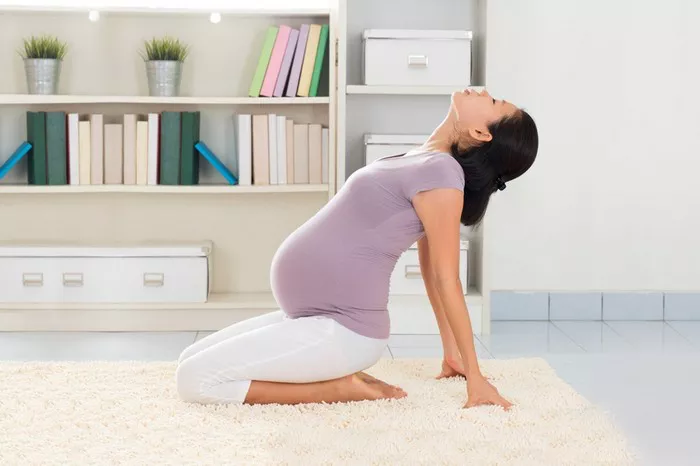Stretch marks are common during pregnancy. Many women notice them on their belly, thighs, or breasts. They appear as streaks or lines on the skin. At first, they may look red, purple, or pink. Over time, they often fade to a lighter color. Stretch marks are not harmful. They do not cause any medical problems. But some women feel self-conscious about them.
What Causes Stretch Marks?
Stretch marks happen when the skin stretches quickly. Pregnancy causes rapid growth in certain areas. The belly expands as the baby grows. The breasts get bigger to prepare for breastfeeding. Some women also gain weight in their thighs. When the skin stretches too fast, the middle layer of skin tears. This creates stretch marks.
Hormones also play a role. Pregnancy hormones like cortisol weaken the skin’s fibers. This makes the skin more likely to tear. Genetics matter too. If your mother had stretch marks, you are more likely to get them.
When Do Stretch Marks Appear?
Stretch marks usually show up in the second half of pregnancy. Some women see them earlier. Others may not notice them until the last few weeks. They often appear on the belly first. As the belly grows, the marks may spread. The breasts and thighs can also develop stretch marks. Some women get them on their hips or lower back.
After pregnancy, stretch marks may fade. They often turn lighter, almost white or silver. But they do not completely disappear. The texture of the skin may feel different. Some areas may be slightly indented.
Can You Prevent Stretch Marks?
There is no sure way to prevent stretch marks. But some methods may help reduce their appearance. Keeping the skin moisturized is important. Dry skin is more prone to tearing. Using creams or oils can help. Many women use cocoa butter, almond oil, or shea butter. These keep the skin soft and elastic.
Drinking plenty of water helps. Hydrated skin stretches better. Eating a healthy diet is also important. Foods rich in vitamins C and E support skin health. Protein helps repair skin tissues. Gaining weight slowly may reduce stretch marks. Rapid weight gain puts more stress on the skin.
Do Creams and Oils Really Work?
Many products claim to prevent stretch marks. But there is no strong proof that they work. Some creams may help keep the skin moisturized. This can make the skin more comfortable. But they will not stop stretch marks completely.
Some ingredients may help. Hyaluronic acid can improve skin hydration. Retinoids may help with skin repair. But retinoids are not safe during pregnancy. They should only be used after delivery. Vitamin E oil is often recommended. But studies show mixed results.
Massaging the skin may help. It improves blood flow and elasticity. Gentle massage with oil can make the skin feel smoother. But it will not remove existing stretch marks.
Are There Treatments for Stretch Marks?
After pregnancy, some treatments may reduce stretch marks. But they will not remove them completely. Laser therapy can help fade the marks. It stimulates collagen production. This makes the skin look smoother. Microdermabrasion is another option. It removes the top layer of skin. This can make stretch marks less noticeable.
Chemical peels may also help. They use acids to exfoliate the skin. This can improve texture and color. Creams with retinoids may be used after pregnancy. They help rebuild collagen. But results vary from person to person.
Home remedies are also popular. Aloe vera gel can soothe the skin. Coconut oil may improve moisture. But these methods have limited scientific support.
Should You Worry About Stretch Marks?
Stretch marks are normal. Most women get them during pregnancy. They are not a sign of any health problem. They do not affect the baby. Over time, they become less noticeable.
Some women feel unhappy about their stretch marks. Society often puts pressure on women to have perfect skin. But stretch marks are a natural part of pregnancy. They are a reminder of the amazing changes the body goes through. Many women learn to accept them as part of their journey.
How to Feel Better About Stretch Marks
If stretch marks bother you, there are ways to cope. Talking to other mothers can help. Many women share the same experience. Wearing comfortable clothes can boost confidence. High-waisted underwear or swimsuits can cover areas you feel shy about.
Focusing on the positive can help. Your body has done something incredible. It has grown and nourished a new life. Stretch marks are part of that story. Some women even see them as a badge of honor.
When to See a Doctor
Most stretch marks do not need medical care. But sometimes, they can be a sign of other issues. If stretch marks appear suddenly without pregnancy or weight gain, see a doctor. This could be due to hormonal problems. Conditions like Cushing’s syndrome cause stretch marks.
If stretch marks are very red, itchy, or painful, talk to a doctor. This could be a sign of a skin condition. Rarely, stretch marks can become infected. Look for signs like swelling or pus.
Conclusion
Stretch marks are a common part of pregnancy. They appear when the skin stretches quickly. Hormones and genetics also play a role. There is no sure way to prevent them. But keeping the skin moisturized and healthy may help.
Related topics:
What’s Overheating and Mild Fever During Pregnancy?
10 Foods That Help Lower Blood Pressure During Pregnancy
What Do I Do If Birth Control Fails – 7 Steps!

